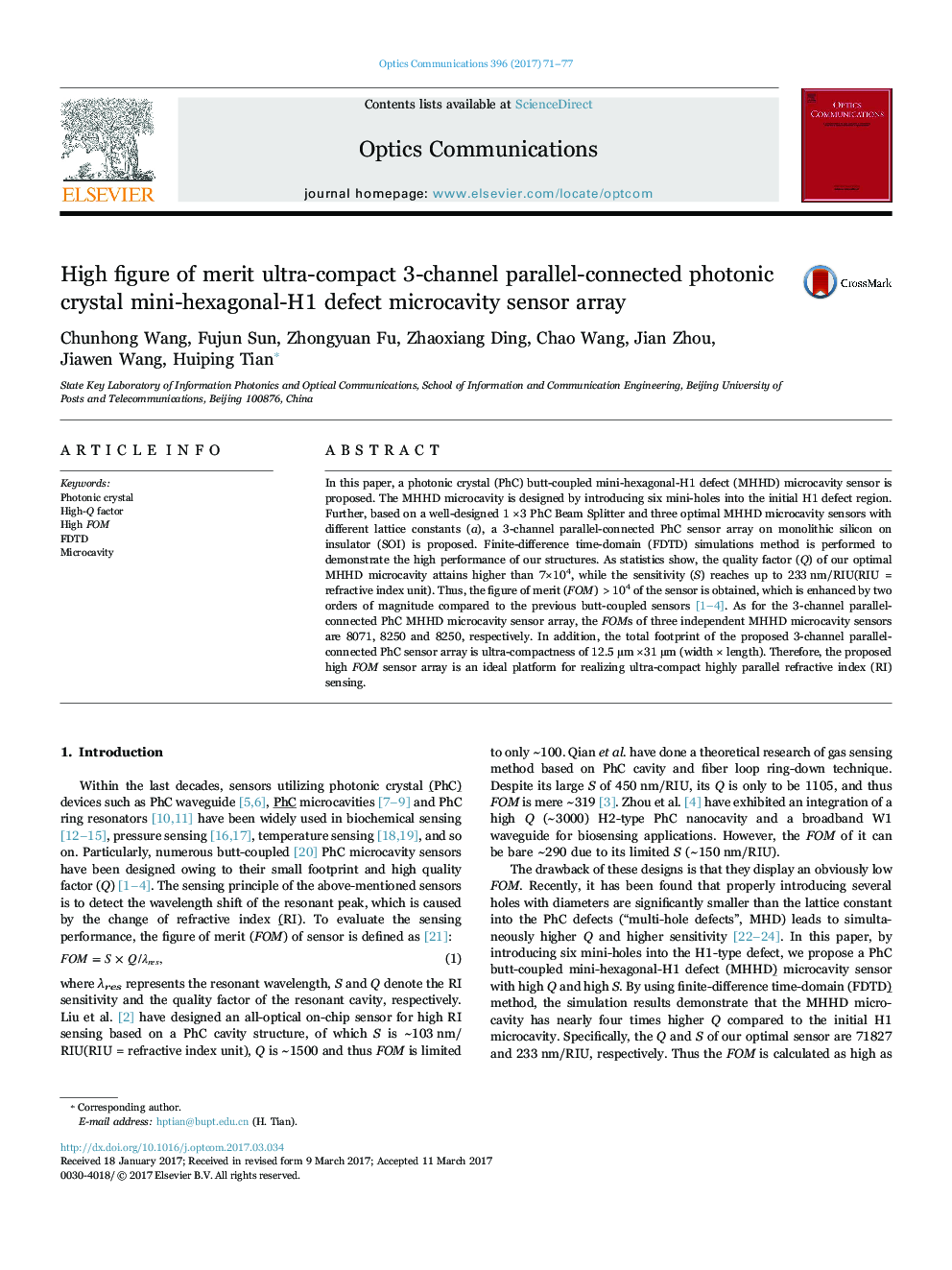| Article ID | Journal | Published Year | Pages | File Type |
|---|---|---|---|---|
| 5449434 | Optics Communications | 2017 | 7 Pages |
Abstract
In this paper, a photonic crystal (PhC) butt-coupled mini-hexagonal-H1 defect (MHHD) microcavity sensor is proposed. The MHHD microcavity is designed by introducing six mini-holes into the initial H1 defect region. Further, based on a well-designed 1 Ã3 PhC Beam Splitter and three optimal MHHD microcavity sensors with different lattice constants (a), a 3-channel parallel-connected PhC sensor array on monolithic silicon on insulator (SOI) is proposed. Finite-difference time-domain (FDTD) simulations method is performed to demonstrate the high performance of our structures. As statistics show, the quality factor (Q) of our optimal MHHD microcavity attains higher than 7Ã104, while the sensitivity (S) reaches up to 233 nm/RIU(RIU = refractive index unit). Thus, the figure of merit (FOM) >104 of the sensor is obtained, which is enhanced by two orders of magnitude compared to the previous butt-coupled sensors [1], [2], [3], [4]. As for the 3-channel parallel-connected PhC MHHD microcavity sensor array, the FOMs of three independent MHHD microcavity sensors are 8071, 8250 and 8250, respectively. In addition, the total footprint of the proposed 3-channel parallel-connected PhC sensor array is ultra-compactness of 12.5 µm Ã31 µm (width à length). Therefore, the proposed high FOM sensor array is an ideal platform for realizing ultra-compact highly parallel refractive index (RI) sensing.
Keywords
Related Topics
Physical Sciences and Engineering
Materials Science
Electronic, Optical and Magnetic Materials
Authors
Chunhong Wang, Fujun Sun, Zhongyuan Fu, Zhaoxiang Ding, Chao Wang, Jian Zhou, Jiawen Wang, Huiping Tian,
